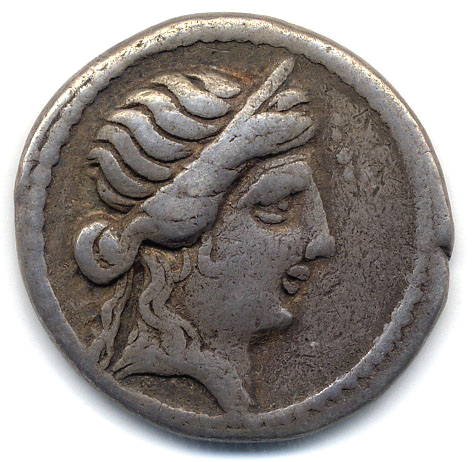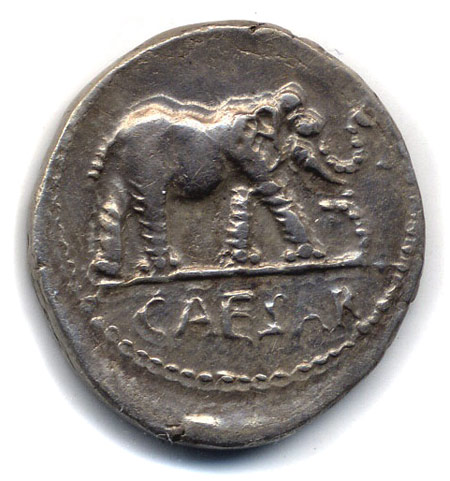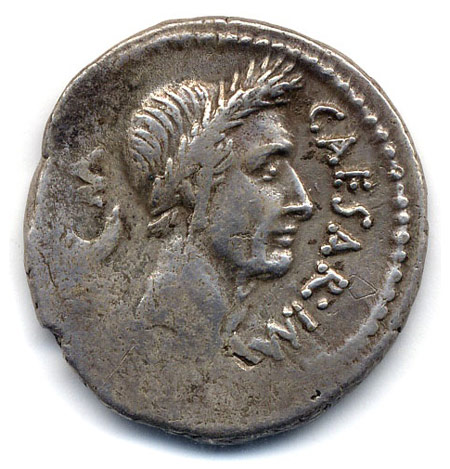Caesar: A Historical Overview
C. Julius Caesar was born in 100 BC to a patrician family who had recently regained some political influence through an advantageous marriage between his aunt Julia and the famous general C. Marius. His family traced its history back to the first kings of Rome as well as to Venus and Aeneas (RRC 458).
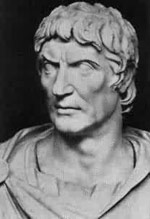
Caesar was initially married to the daughter of Marian supporter L. Cornelius Cinna and appointed Flamen Dialis in 87 BC, an important priesthood, but one that prevented further political advancement. The rise to dominance of Sulla, the chief opponent of Marius, put Caesar in an untenable situation. In 82 BC he was stripped of his role as Flamen Dialis, and ordered to divorce his Marian wife Cornelia. Caesar refused. He subsequently spent his next ten years in Asia studying and gaining military distinctions including the corona civica.
After the death of Sulla in 78 BC, Caesar prosecuted Sullan supporters, winning fame as an orator. In 73 BC he became a pontifex and in 69 BC he was elected as quaestor. The death of his wife and aunt before his departure to Spain allowed him to advertise his family and political inheritance through his aunt's funeral oration (Suet, Div. Iul. 6.1). It was at her funeral that he displayed as an image of Marius thus clearly affirming his political affiliations. Upon his return to Rome Caesar supported Pompey's extraordinary commands against the pirates and the war against Mithridates VI in 67-66 BC. At the same time Caesar won the favour of L. Licinius Crassus, who provided him financial support, particularly in his aedileship in 65 BC. This support provided Caesar with funds for large-scale bribery in the elections of 63 BC, when he obtained the office of Pontifex Maximus.
In 62 BC, while praetor, Caesar was embroiled in religious controversy. The presence of P. Clodius Pulcher at the exclusively female festival of the Bona Dea (held on Caesar's property) caused Caesar to divorce his second wife Pompeia to avoid suspicion of impropriety. He travelled to Spain as a propraetor heavy with debt. Through warfare and subsequent booty in his year in Spain Caesar cleared his debts and won a triumph for his success against the independent Spanish tribes. He was, however, forced to choose between the triumph and election to the consulship. To ensure his election to the consulship Caesar rallied support from Pompey and Crassus. Caesar's consulship in 59 BC proved difficult owing to his hostile partner in office M. Calpurnius Bibulus.
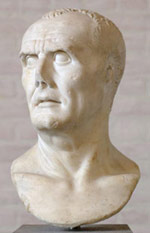
The use of illegal methods during his consulship forced Caesar to continue his alliance with Pompey and Crassus to avoid prosecution. The alliance was sealed with Pompey's marriage to Caesar’s daughter Julia and in turn, Caesar's marriage to Calpurnia, the daughter of L. Calpurnius Piso Caesoninus, consul in 58 BC. From this alliance, Caesar gained the proconsulship of Illyricum, Cisalpine and Transalpine Gaul for five years. During this time he successfully waged war in Gaul, providing him with money, prestige and loyal soldiers. In 56 BC after attempts to recall Caesar for prosecution, Pompey, Caesar and Crassus met at Luca to renew their alliance. Caesar's command was extended while Crassus and Pompey were to govern Syria and Spain respectively. To achieve this Pompey and Crassus were to be co-consuls in 55 BC. However the deaths of Julia in 54 BC and Crassus in 53 BC gave Pompey the impetus to break his alliance with Caesar. In 49 BC, ostentatiously to protect the tribunate, but in reality to avoid prosecution, Caesar crossed the Rubicon and began a civil war.
During the war, Caesar held many political and military offices traceable on his coinage. He first began to mint coins in his own name upon his return to Rome in 49 BC (RRC 443) and continued to mint until his death in 44 BC. Caesar quickly regained control of Italy and pursued Pompey and his supporters to Greece. He defeated Pompey at Pharsalus in 48 BC. Caesar pursued him to Egypt, where he met Cleopatra VII and helped her to secure the throne. Caesar then left Egypt to reorganise the eastern provinces and defeat Pharnaces II, King of Bosporus, at Zela in September 47 BC. Meanwhile the death of Pompey did not mean the end of the Republican cause. Republican strongholds in Africa and Spain continued to provide resistance. Caesar finally obtained control of Africa and returned to Rome in September 46 BC to celebrate four triumphs. While he celebrated his victories, Pompey's sons Gnaeus and Sextus raised thirteen legions in Spain. Caesar defeated their forces at Munda in March 45 BC. He returned to Rome to celebrate a triumph for his victory and was awarded many honours including dictatorship for life and the title parens patriae. In 44 BC his portrait appeared on Roman coinage (RRC 480/4).
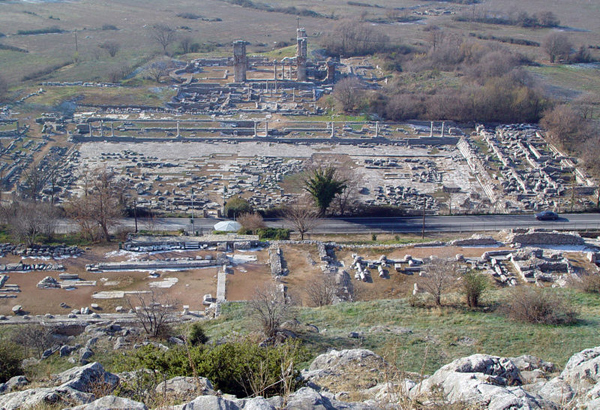
Caesar's power and unrivalled position created many enemies amongst his peers. While outwardly rejecting the title rex, Caesar adopted some of the symbols of monarchy, such as the dress and ornaments of the Roman kings. His monopoly of power led to his assassination on 15 March 44 BC, at the hands of a large group of men, including Cassius and Brutus, who believed his death would restore the republic. However, the death of Caesar led to unrest and further civil war. Antony, Lepidus, and Caesar's adopted son Octavian, fought over Caesar's legacy. Antony and Octavian used Caesar's image and their relationship with him to build support from his veteran armies. In November 43 BC the three men joined forces to consolidate their power, and through the lex Titia formed the Triumviri Rei Publicae Constituendae (III VIR RPC, the three men for the restoration of the republic). Once their power was established they undertook a campaign to punish the assassins of Caesar. The main body of conspirators had fled to Greece and Macedonia where they attempted to gain support for the restoration of Libertas. In 42 BC Antony and Octavian defeated the republican forces at Philippi, finally avenging the murder of Caesar.
![]()

